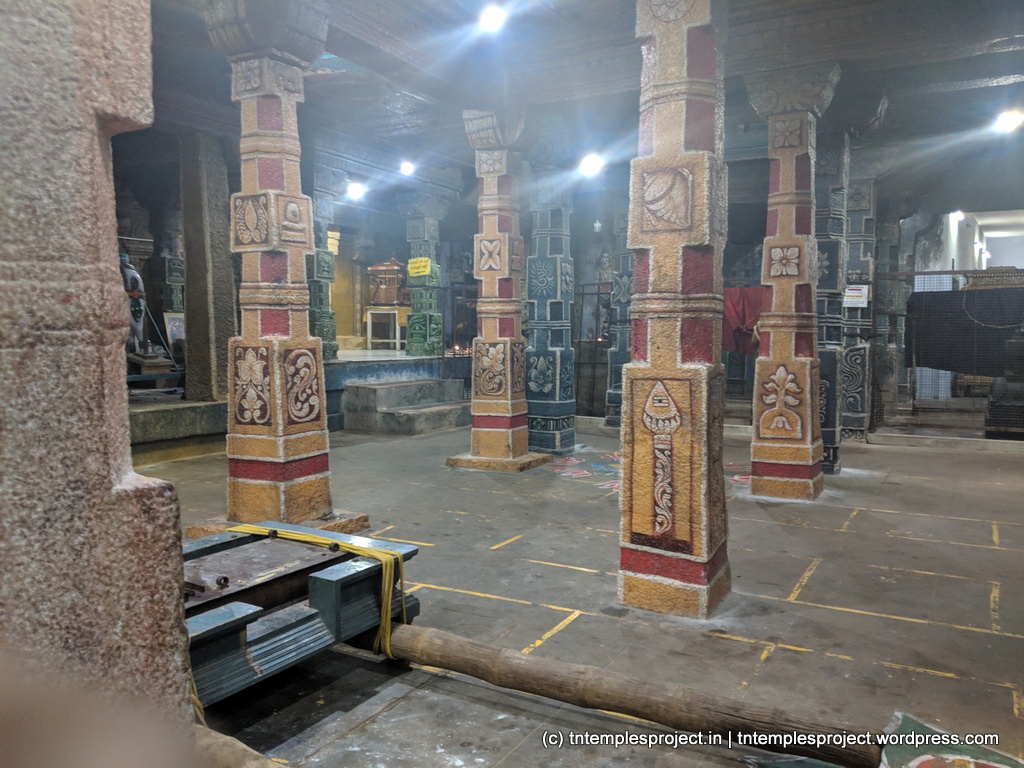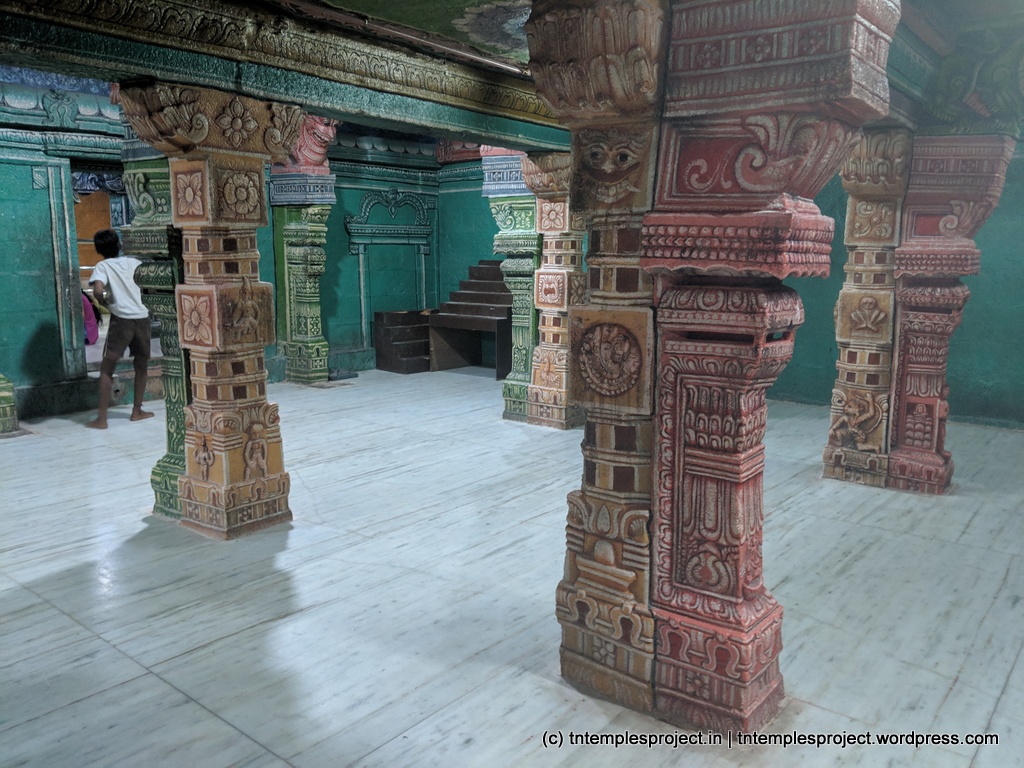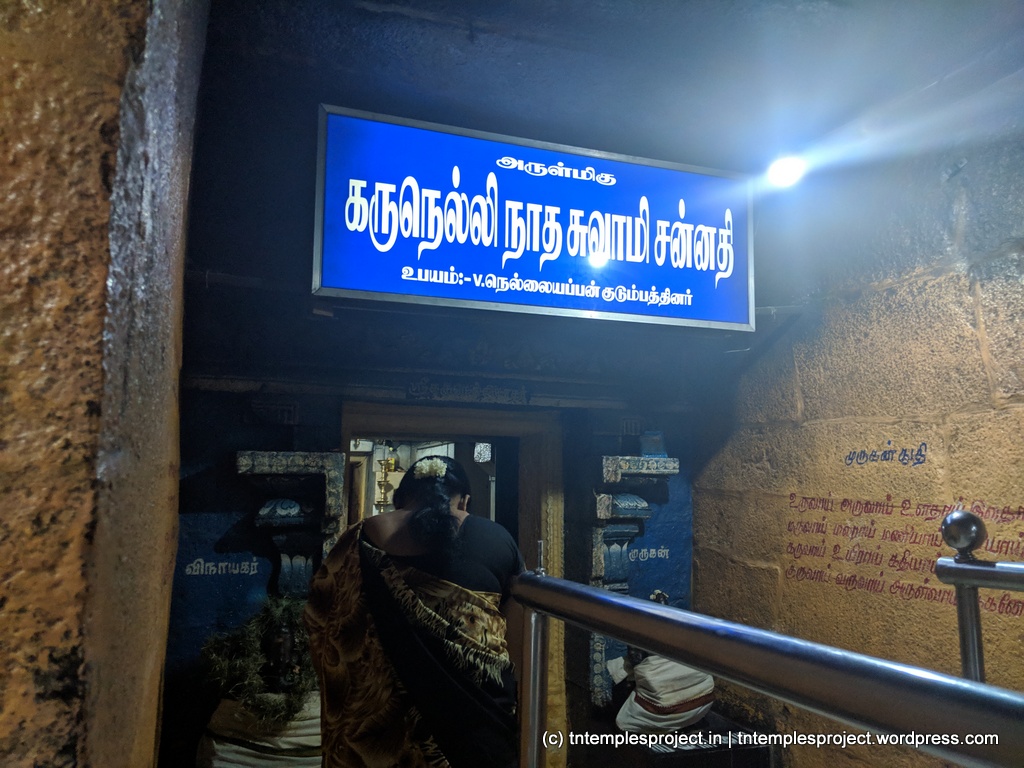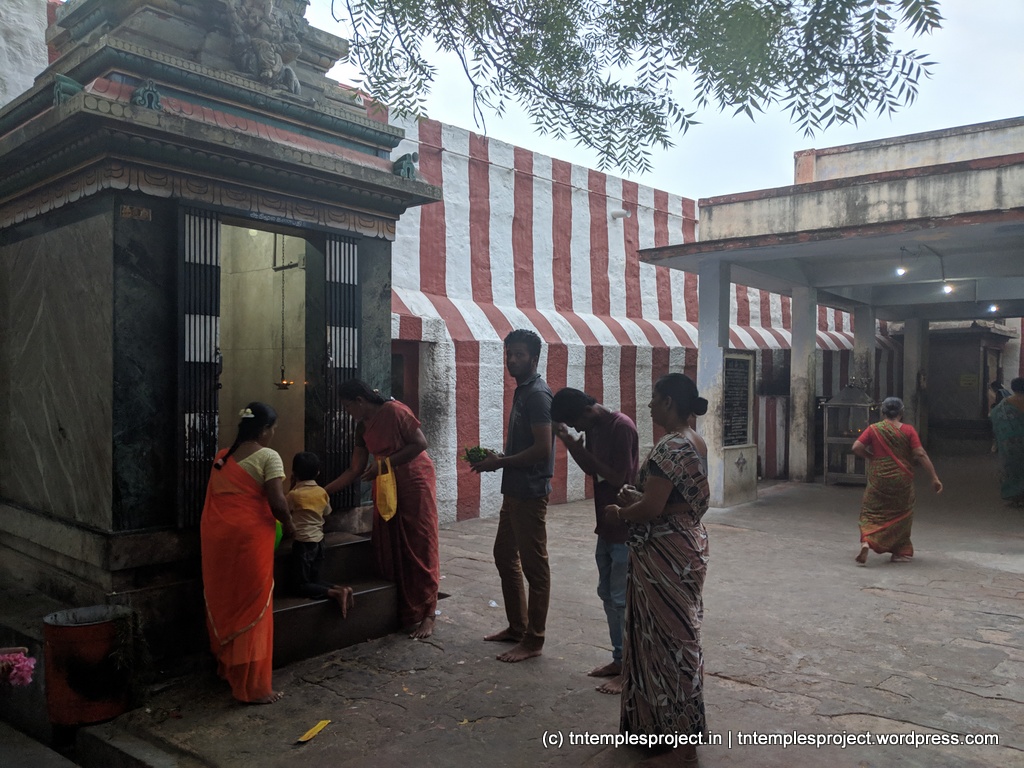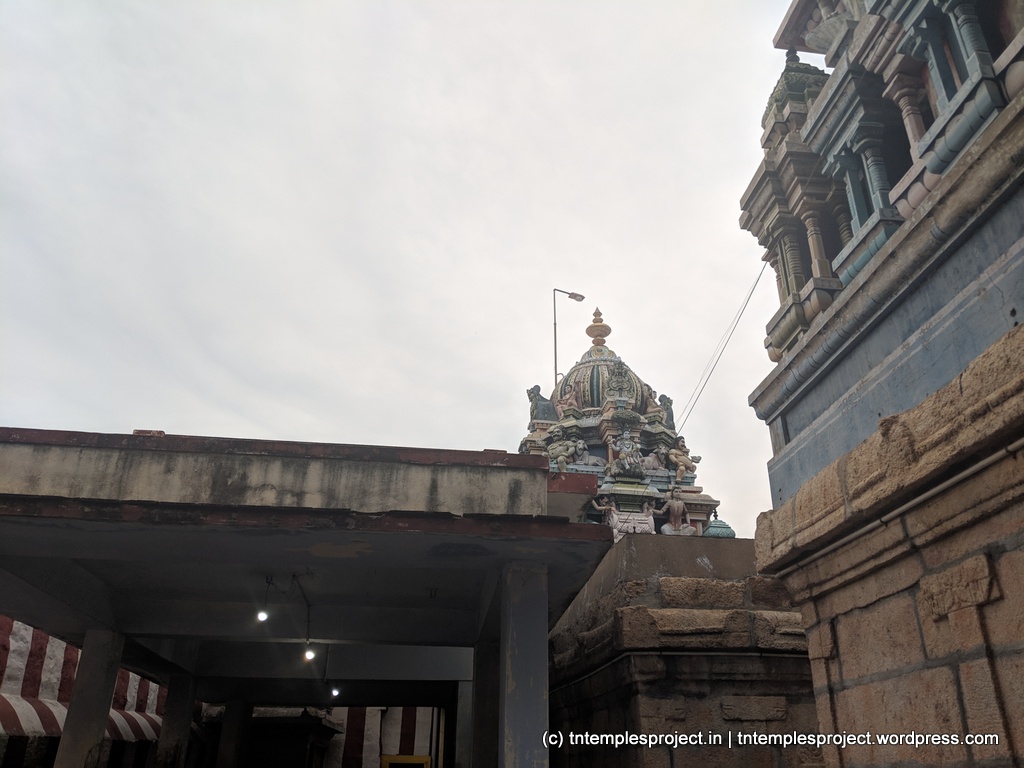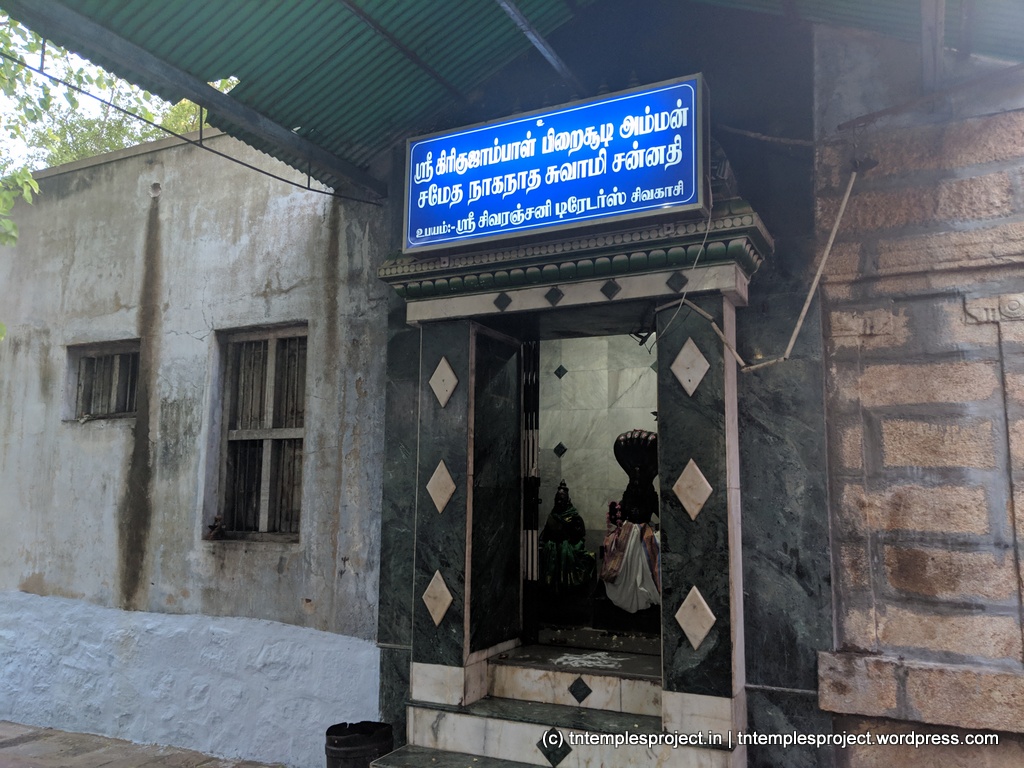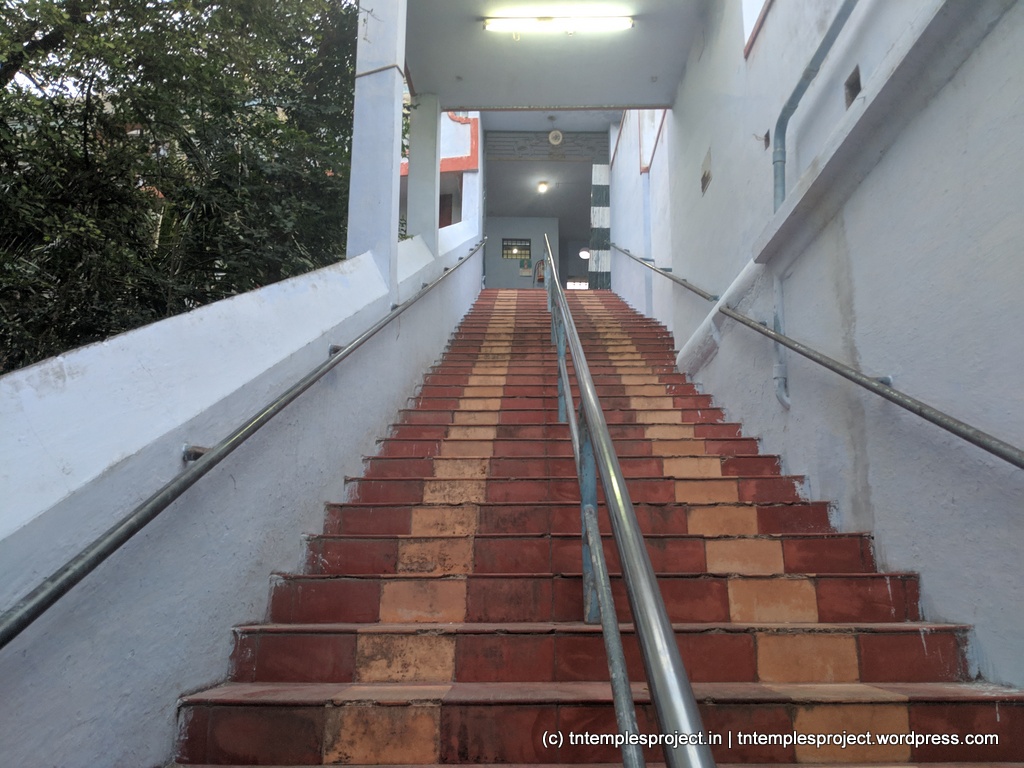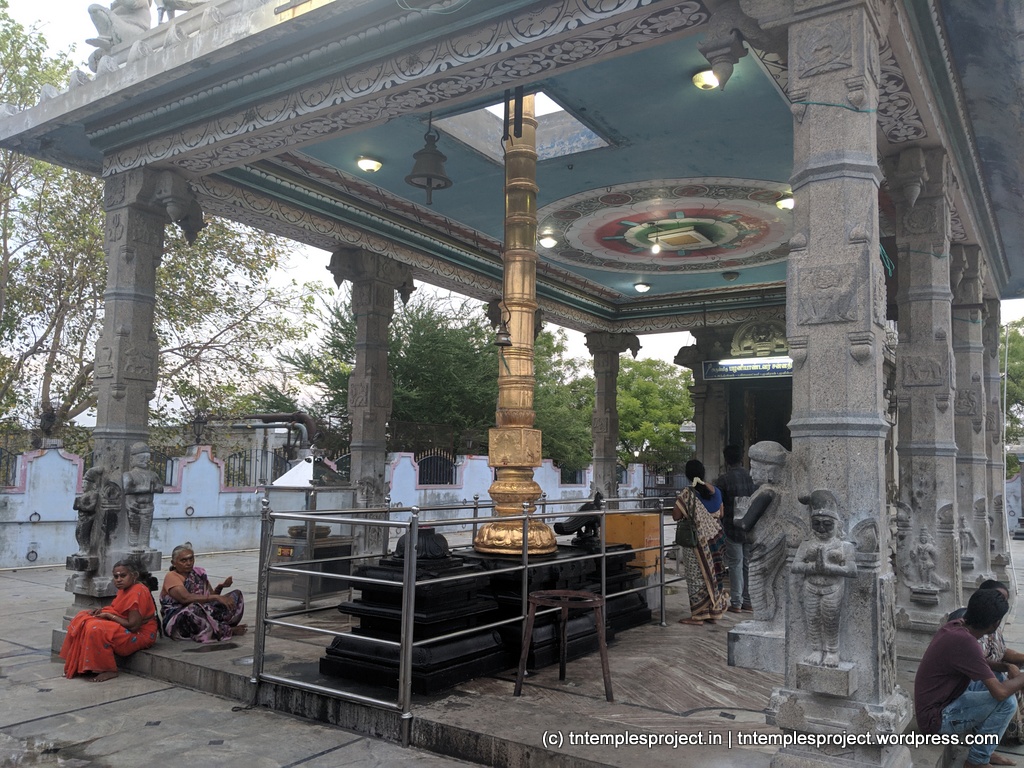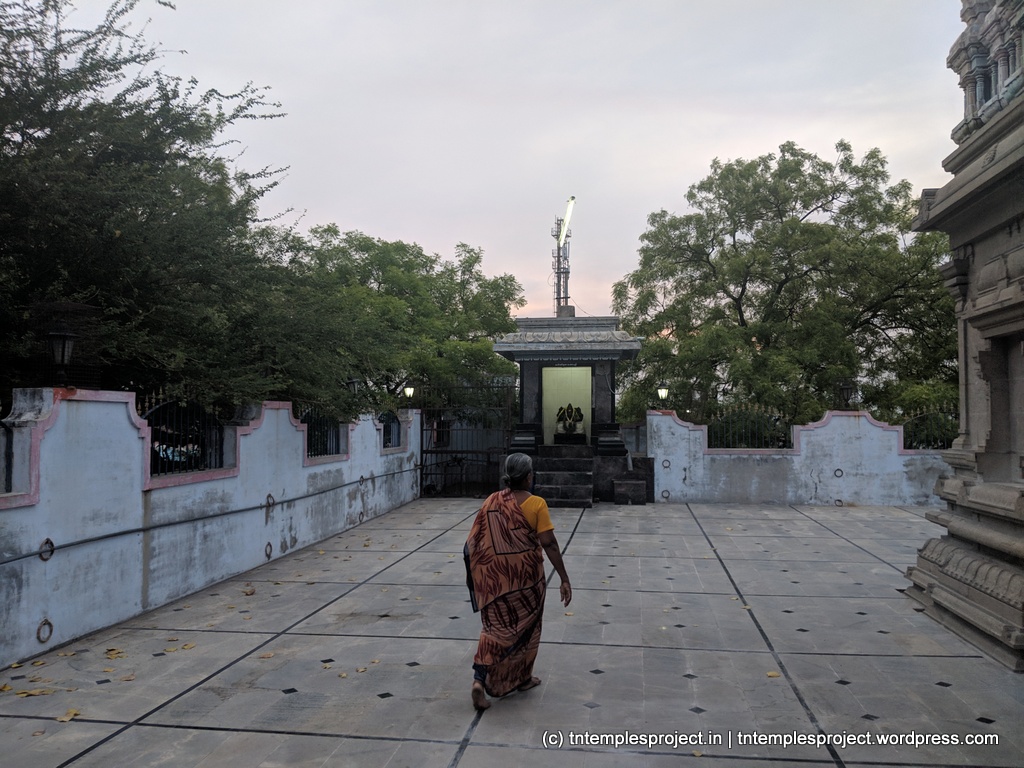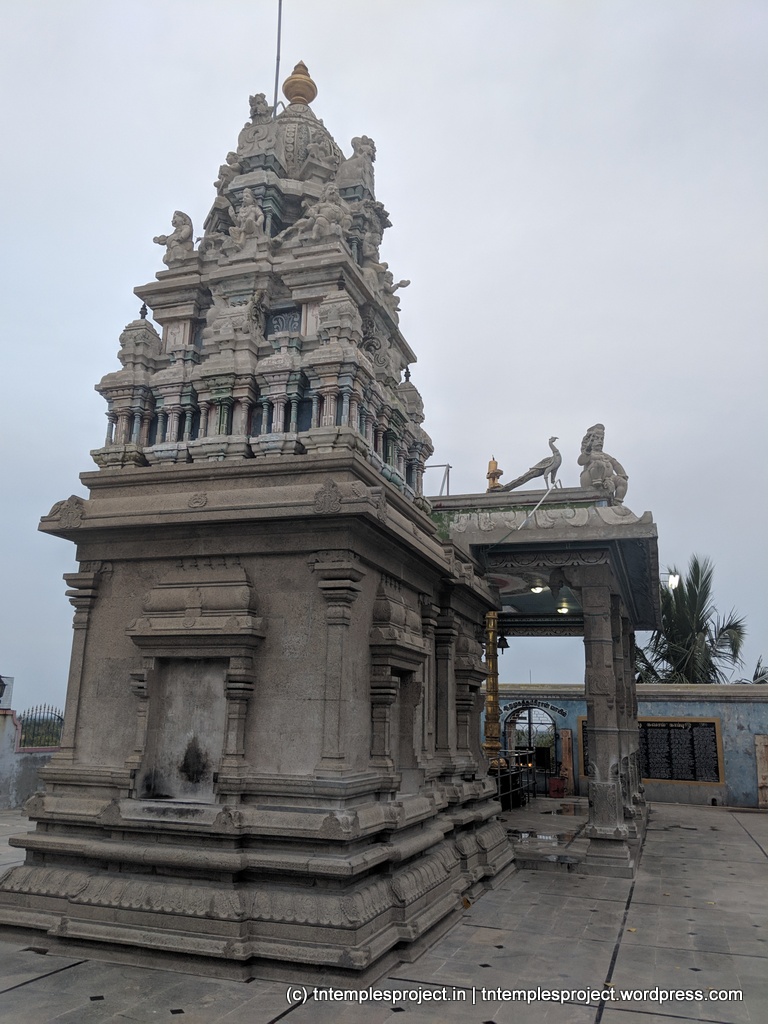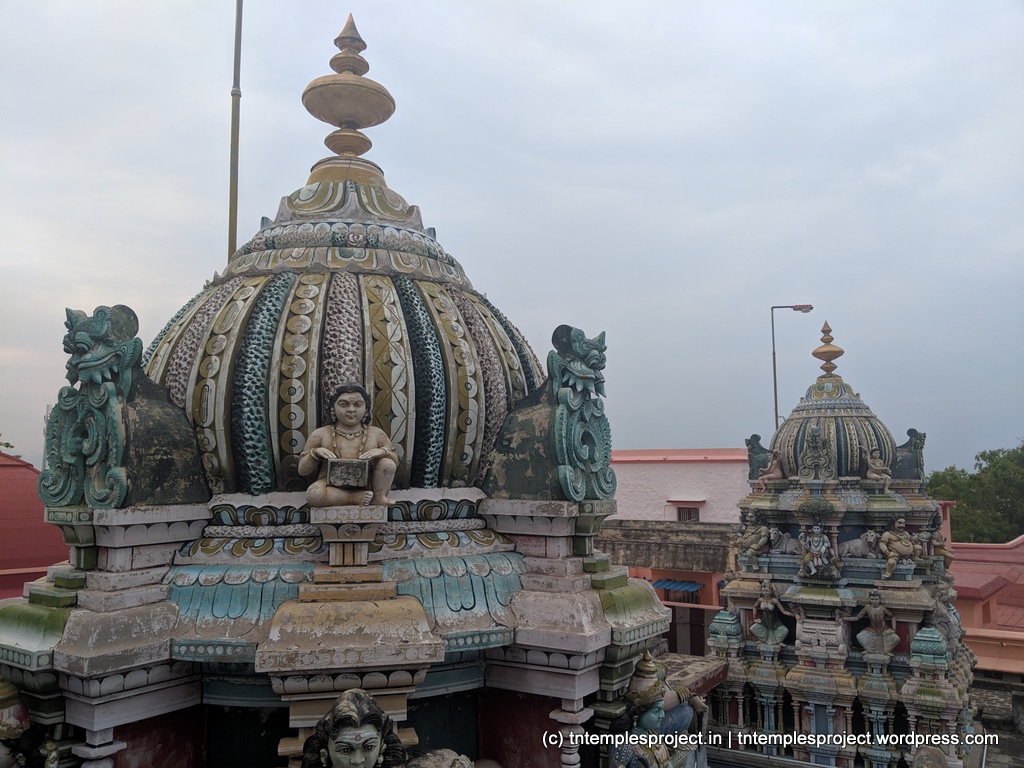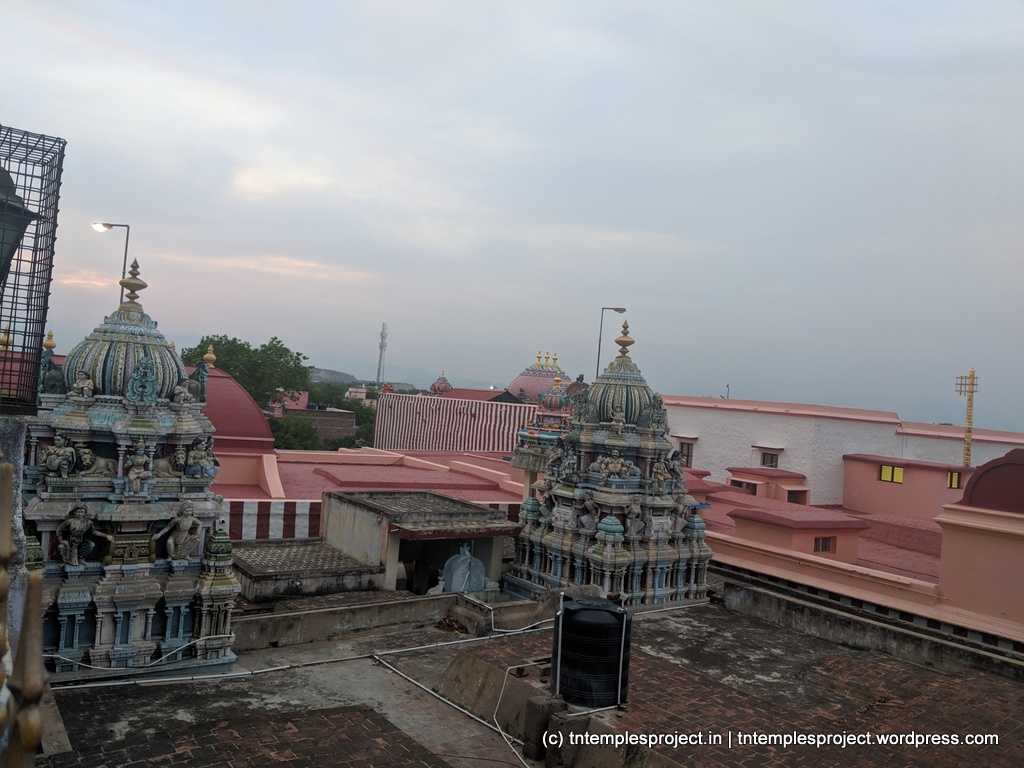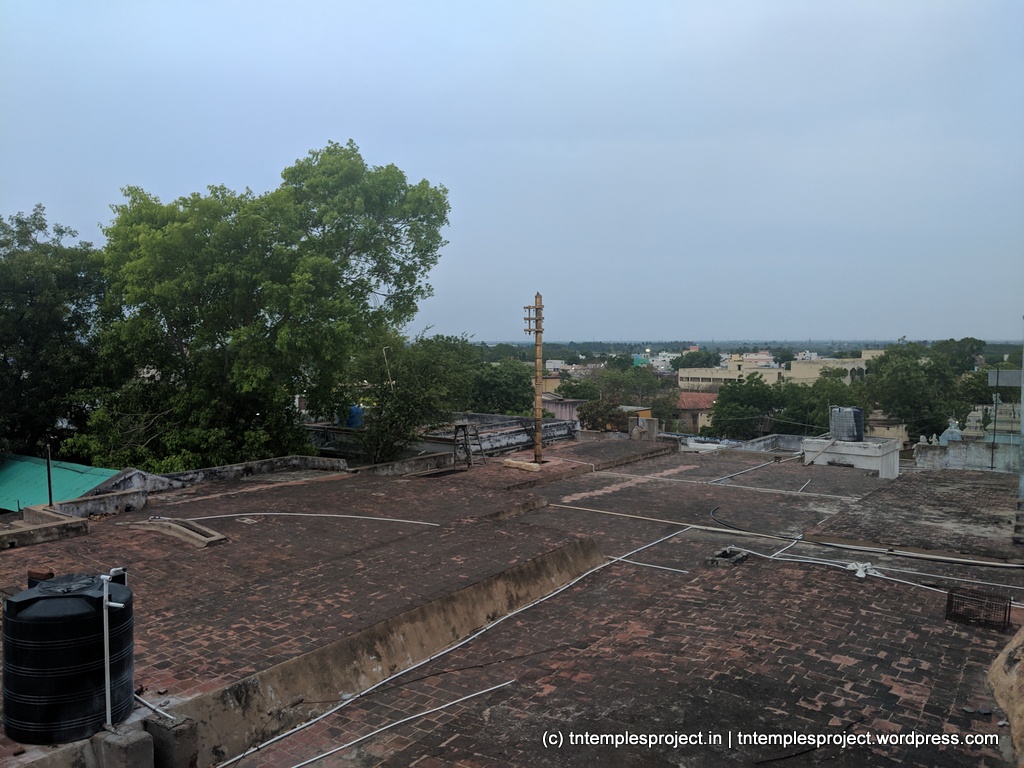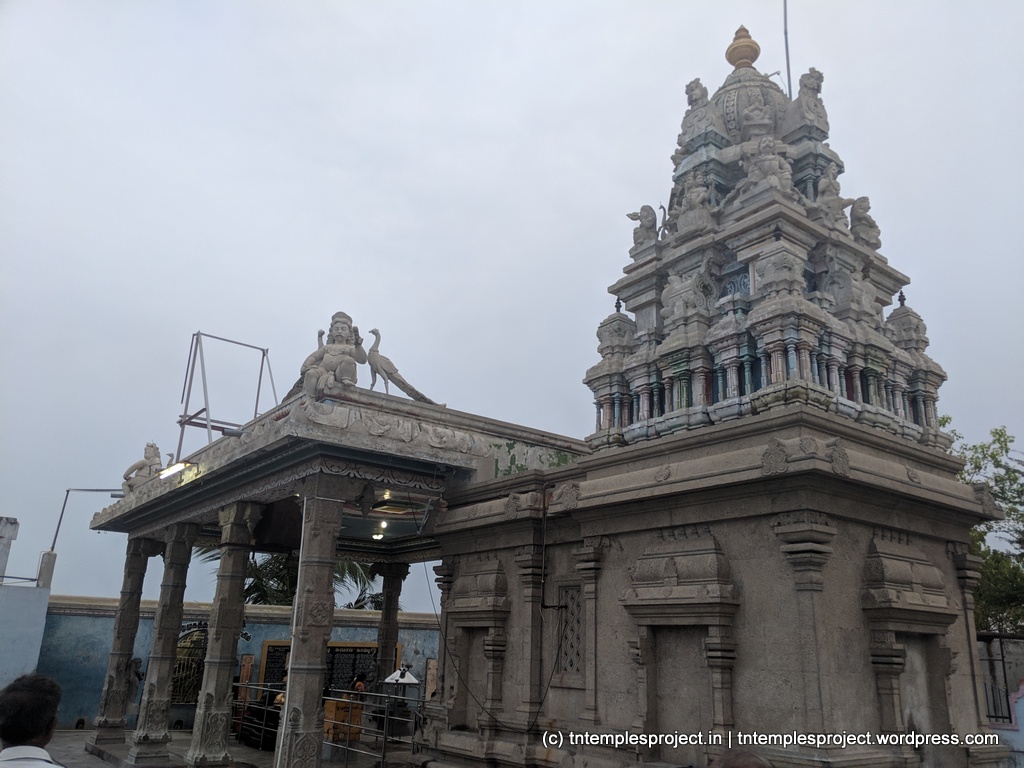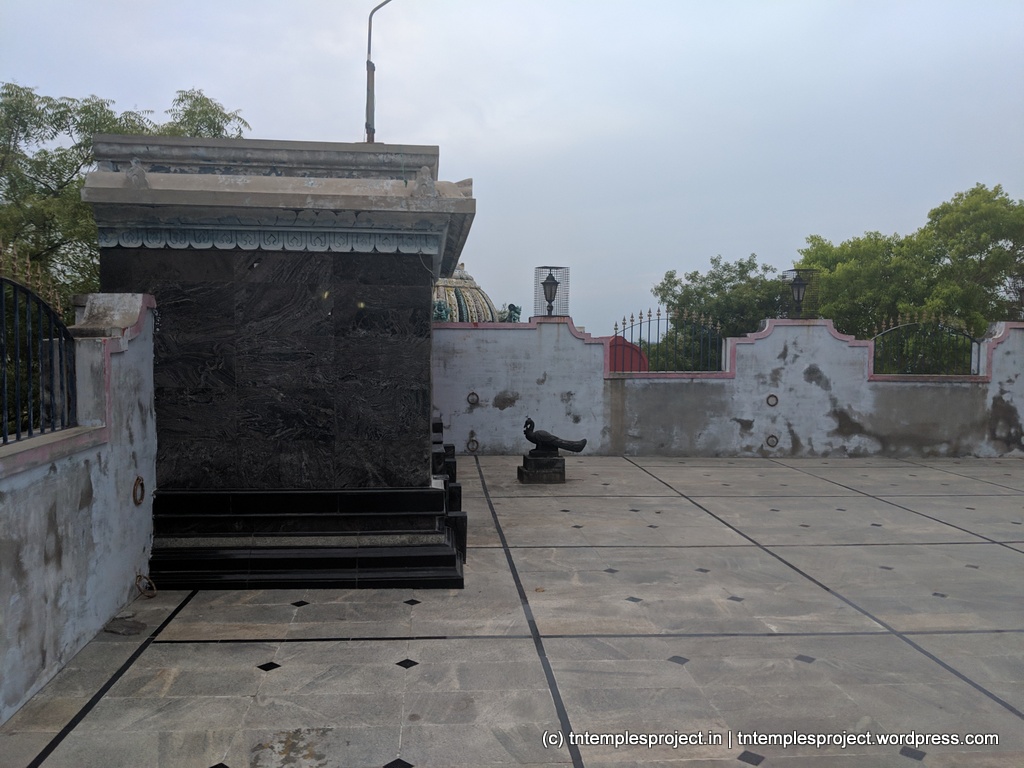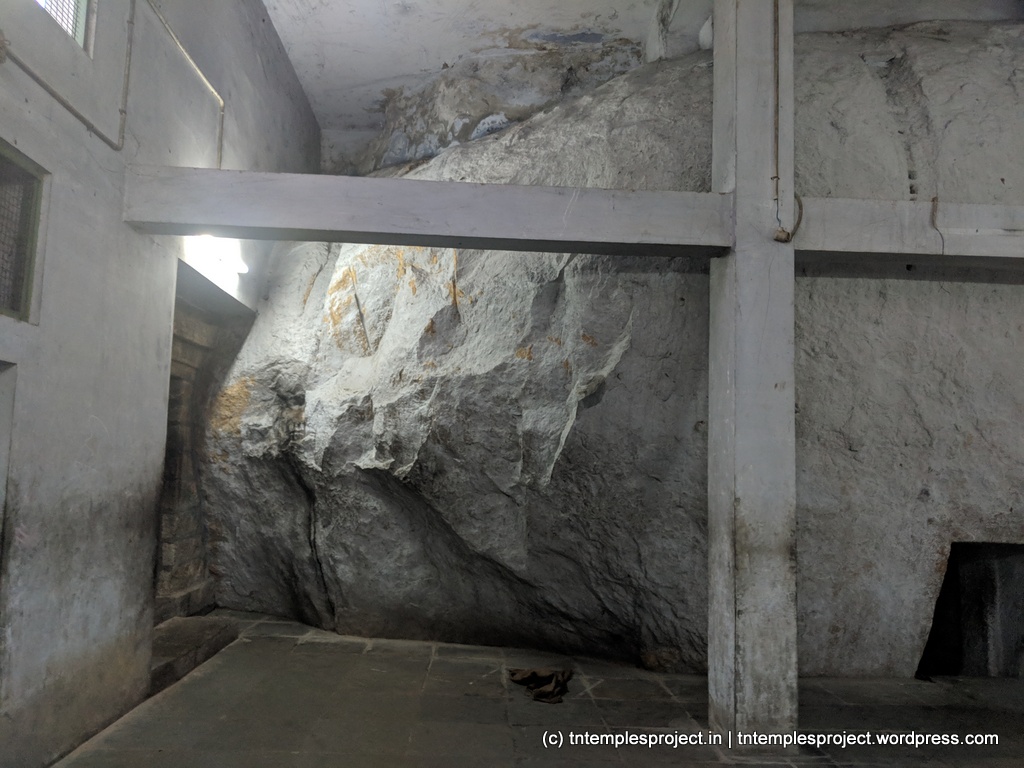Basic information about the temple
| Moolavar: | Karunelli Nathar | Ambal / Thayar: | Chokki Amman |
| Deity: | Historical name: | ||
| Vriksham: | Karunelli | Teertham: | Arjuna Teertham |
| Agamam: | Age (years): | ||
| Timing: | 6 to 11 & 4 to 8 | Parikaram: | |
| Temple group: | – | ||
| Sung by: | Temple set: | ||
| Navagraham: | Nakshatram: | ||
| City / town: | Tiruthangal | District: | Virudhunagar |
| Maps from (click): | Current location | Virudhunagar (24 km) | Sivaganga (65 km) |
| Madurai (73 km) | Theni (85 km) |
Location
Sthala puranam and temple information

This temple is located on the same hillock as the Nindra Narayana Perumal temple, a Divya Desam temple. In fact, there is a passage connecting the two temples. The temple is built on a hillock which has been dug through, making it in effect like a cave temple, where the Siva and Parvati shrines are located.
This place used to be a forest of nelli (amla) trees, and hence Siva here is named Nelli-vana nathar.
In the Mahabharatam, the river Ganga had bestowed the Pandavas with a boon that water from there would be available to the Pandavas wherever they went, for use in their worship. When the Pandavas stayed here during their period of exile, Arjuna shot an arrow in the ground, which created a river with water from the Ganga. The river continues to be known even today as the Arjuna river, and is the Teertham of the temple.
The town gets its name from the puranam of the Divya Desam temple. In order to settle a dispute as to who was the best among Vishnu’s consorts, Sridevi came here to perform penance. Seeing her piety, Vishnu descended from Vaikuntam and proclaimed her as the best, after which Sridevi remained at this place. As She is also called Tiru, this place is called Tiruthangal (the place where Tiru stayed).
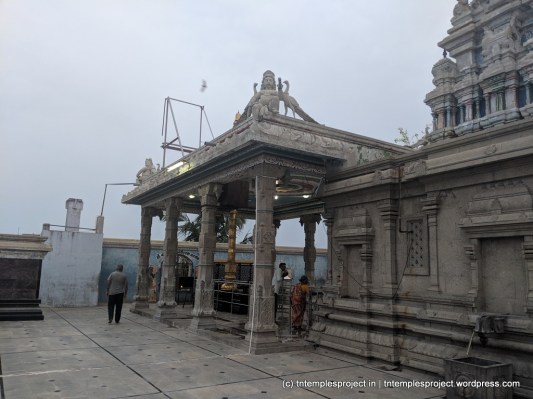
This temple is more famous, however, for the separate Murugan shrine, located at the top of the hillock, which has its own story and history. Arumuga Thambiran was a staunch Murugan devotee, who regularly went on pilgrimage to Palani. After a point, his age came in the way, and so he decided to stay here and worship Murugan. One day, he was cooking food to offer to the deity, when Murugan showered gold coins on him. Thambiran used these to build the temple here, which is on the same lines as Palani, and Murugan is depicted similarly, as an ascetic and alone (ie without His consorts). Worshipping at the Murugan shrine here is considered equivalent to worshipping at Palani.
The original temple (the cave temple shrines) here are from the early Pandya period, while subsequent expansions and renovations were made in the 13th century by Gurukala Tirayan, a minister in the court of Sundara Pandyan. Sundara Pandyan himself donated vast tracts of land and made other endowments to this temple, according to inscriptions here. This ancient temple finds mention in the Tamil epic, Silappathikaram.
Other information for your visit
Contact
Gallery

